Books
Books
in random order

Wave of Blood
Is it the computerization of the planet
Or a loosening of my fidelity to suffering
I don’t understand the intensity
I’ve hidden here but I know I despaired
Of finding a physical place to keep
My tears. Now what. Seas that go turquoise
When you stop looking at them . . .
Wrestling with the mind of war, at times shocking in its self-analysis, Wave of Blood is a furious and sincere essay, an eclipse notebook, a family chronicle, all told in the poetry of witness.
Praise for Ariana Reines:
Ariana Reines is a go-for-broke artist who honors her traditions by being like no one else. Some of us have made a fetish of our stupidity, pretending to forget history, and some of us have made a fetish of despair, congratulating ourselves on melancholia, but Ariana is too brilliant and too alive for either of those sad luxuries... I am convinced of the authenticity of the summonses she receives and the summonses she issues and when I read her I am reminded that all of this is a calling before it's an identity or career. Her voice-which is always more than hers alone is a dialectic between the very ancient and the bleeding edge. - Ben Lerner
Reines's books are works of intellectual commitment and structural sophistication; at the same time, they allow the raw stuff of being, in all its messiness, to enter the page. -The White Review
Mind-blowing. - Kim Gordon
Her writing is queer and raunchy, raw and occult, seemingly never pulling away from her deepest vulnerabilities. Yet Reines simultaneously maintains a feeling of epic poetry, of ancient intention. She moves between worlds in search of the divine and the self. - The New York Times
These are the kinds of poems that reorient you in the world, make you understand how little you know, but how much is inside you. - NYLON

NIGHTNIGHT
In collaboration with Laurent Poleo-Garnier, NIGHTNIGHT is an archive of images and texts from different sources addressing the theme of the night. Over the book as a party that degenerates with fatigue, alcohol and other stimulants, images and layout deteriorate, the subjects get tired, the vision is cloudy...

A Finger in the Fishes Mouth
A facsimile edition of Derek Jarman’s sole, early, extremely rare poetry book A Finger in the Fishes Mouth, originally published in 1972.
Heavily illustrated from Jarman’s collection of postcards, the book combines text and visual imagery in a way which foreshadows his subsequent style as an artist and filmmaker. With the majority of the first edition having been destroyed by Jarman, this makes available a missing, significant piece of his oeuvre.
The facsimile retains the book’s original format, with a silver mirror cover, and an image accompanying each poem, printed in a striking green ink. Additional material comes in the form of a Foreword and Afterwords by So Mayer, Tony Peake and Keith Collins.

mnemotope issue 003
This thrid edition of mnemotope magazine features pieces from contributors that range from playlist, recipes to poetic essays to drawings to private messages to a screenplay and beyond.
Mnemotope is a community magazine, published by bog bodies press. Mnemotope magazine takes this as its inspiration-it acts as a place in which lots of stories from across timelines and borders can sit together, and cultural memories can interact. It exists to create and hold the expression and knowledge of its diverse community, because of this, the contents of the magazine are wonderfully varied; some confessional poetry, some hastily notated recipes, some fiction, some history, lots of other things, all submitted during an open call. The format put spreads together of contributions that seem to somehow be in dialogue with one another.
The name of the magazine comes from a term that's used in writings about archaeological finds - it's a little complex when we speak about it abstractly, so take, for example, a bog body. A bog body is an object, but when we look at one it takes on another function as an image. This image is the part beyond the physicality of the object-it's what makes us think about what the world must have been like when this person was walking on it, what they looked like, what they did, who found them, how much the area they were found in must have changed and so on and so on and so on. A mnemotope is something that compresses time, and allows you to be in the bog two thousand years ago and in the museum looking at the body and at home reading about it all at once.

The Contemporary Condition - Contemporaneity in Embodied Data Practices
Cornelia Sollfrank, Felix Stalder
What parallels are there between a human pranayama practitioner and a migratory bird in heavily datafied environments? In Contemporaneity in Embodied Data Practices, two artistic field studies provide the starting point for a dialogical reflection on the entangling of diverse temporalities in body-related, datafied, and experiential practices. Shifting through biological, historical, and technological rhythms, Cornelia Sollfrank and Felix Stalder unfold their respective more-than-human frames of reference and arrive at specific forms of agency in the contemporary moment. Published in partnership with the Centre for Research in Artistic Practice under Contemporary Conditions at Aarhus University.

ROT
ROT is a publication reflecting the research “Wicked technology/Wild fermentation,” by Sara Manente that focuses on forms and practice of fermentation as ways to rethink bodies and their making. This glossy magazine performs research, aiming to infect the reader, and questioning how to spread, publish, and help the work survive.
Sara Manente is a performance artist, dance maker and researcher born in Italy and living in Brussels. She is interested in narrowing the distance between the performer, the audience, and the work. Her research starts from a dance practice that problematizes perception, translation, and ways of doing. Her work comes out in hybrid forms: book launch, 3Dfilm, written text, interview, choreographic piece, workshop, telepathic experience, collaboration, et al.

Shoot Shoot Shoot: The First Decade of the London Film-Makers' Co-operative 1966-76
The 1960s and 1970s were a defining period for artists’ film and video, and the London Film-Makers’ Co-operative (LFMC) was one of the major international centres. Shoot Shoot Shoot documents the first decade of an artist-led organisation that pioneered the moving image as an art form in the UK, tracing its development from within London’s counterculture towards establishing its own identity within premises that uniquely incorporated a distribution office, cinema space and film workshop.
Contributions from: Antony Balch, Ian Breakwell, Bob Cobbing, John Collins, David Crosswaite, David Curtis, Fred Drummond, John Du Cane, Mike Dunford, Ray Durgnat, Deke Dusinberre, Stephen Dwoskin, Gill Eatherley, Steve Farrer, Simon Field, Chris Garratt, Peter Gidal, Marilyn Halford, David Hall, Roger Hammond, Simon Hartog, Ron Haselden, Jim Haynes, Roger Hewins, Tony Hill, Jeff Keen, Ian Kerr, Jonathan Langran, David Larcher, John Latham, Malcolm Le Grice, Mike Leggett, Carla Liss, John Mathews, Harvey Matusow, Anthony McCall, Barry Miles, Jack Henry Moore, Annabel Nicolson, Jenny Okun, David Parsons, Sally Potter, Stuart Pound, William Raban, Anne Rees-Mogg, Lis Rhodes, Carolee Schneemann, Anthony Scott, Guy Sherwin, John Smith, Chris Welsby. Illustrated throughout in full colour, this book brings together a wide variety of texts, images and archival documents, and includes newly commissioned essays by Mark Webber, Kathryn Siegel and Federico Windhausen.
LUX, London / 2016
Paperback, 288 pages incl 193 full colour illustrations
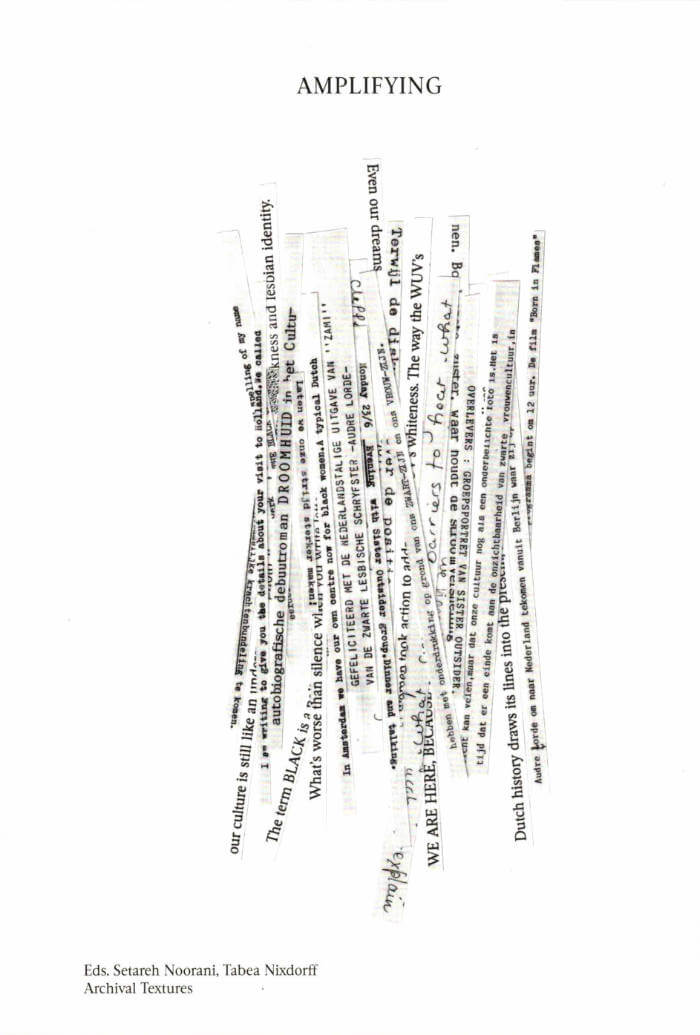
Archival Textures - Amplifying
Setareh Noorani, Tabea Nixdorff
The book Amplifying brings together written manifestations that trace the beginnings of Black feminism in the Netherlands. Amplifying means giving credit to, mentioning, over and over, and supporting the circulation of sources and authors that are formative for our thinking and practices. In the early 1980s, the political term “black” (zwart in Dutch) was introduced in the Netherlands to build alliances between women from different diasporic communities, who were faced with racism in their everyday lives.
Archival materials featured in this book include the original manuscript of the essay “Survivors: Portrait of the Group Sister Outsider” (1984), written by Gloria Wekker in collaboration with the Black lesbian literary group Sister Outsider, the seminal speech Statement of the Black Women’s Group (1983) by Julia da Lima, a contextualizing interview with Tineke E. Jansen and Mo Salomon (1984), excerpts from the book launch of Philomena Essed’s Everyday Racism (1984), and short texts authored by other Black feminist groups in the Netherlands, such as Zwarte Vrouwen & Racisme, Flamboyant, Ashanti, and Groep Zwarte Vrouwen Nijmegen.

Maquillage as Meditation: Carmelo Bene and the Undead
Partly a script, partly a personal voyage into the psyche of diseducation, this book happens, has happened and will happen on the 31st of October in a place called ‘The Palace of Melancholy’. In this temporal and spatial loop, the figure of Italian actor, author, director, philosopher, and public persona Carmelo Bene is summoned to hopefully be dismissed once and for all. Bene is looked at by the author reluctantly and yet resolutely through inner voices of dissent, shame and rebellion. He is imagined in gatherings that didn’t happen and read through an epistemology of contradiction. In Giannini’s company and support, Snejanka Mihaylova, Jacopo Miliani, and Arnisa Zeqo probe the walls of the Palace, looking for an exit.
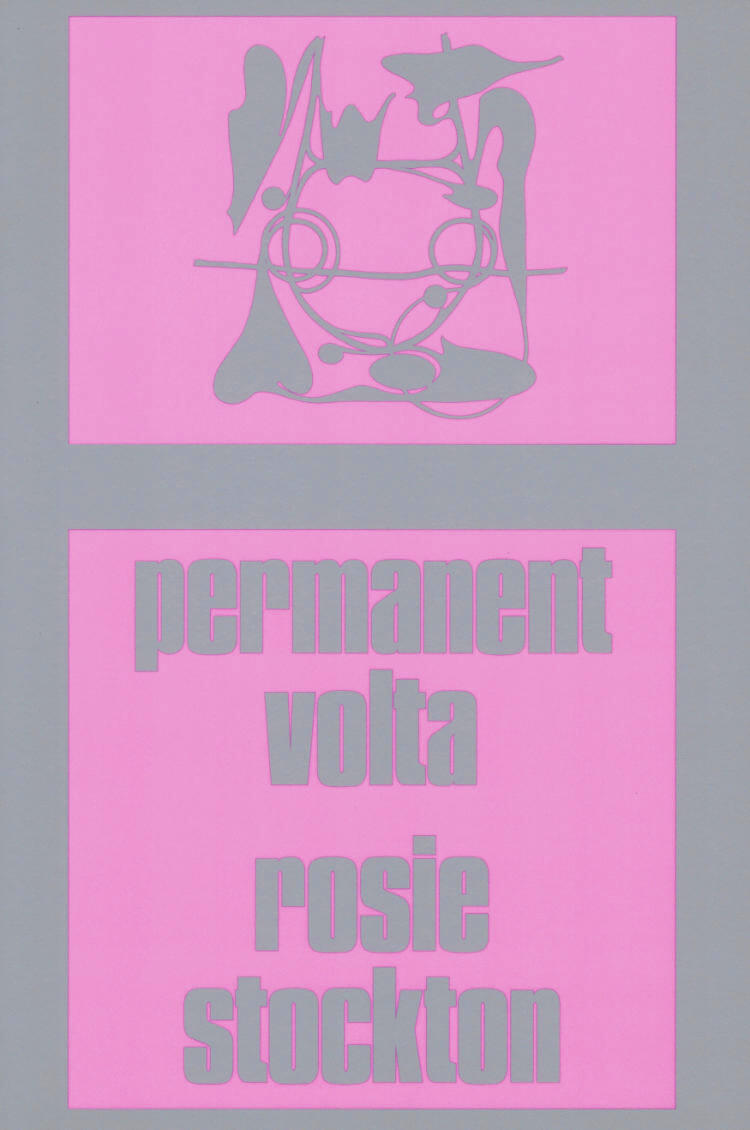
Permanent Volta
Permanent Volta is a book of poems about constraint and debt, as much as it is about excess, credit, loving luxury, and hating work. These are love poems about how queer intimacies invent political and poetic forms, how gender deviance imagines post-sovereign presents and futures.
Taking cues from Rosa Luxemburg's birdsongs and the syntax of invasive flowers, these poems strive to love lack. If history sees writers as tops and muses as bottoms, these poems are motivated by refusal, inversion, and evading representation. In Permanent Volta, the muses demand wages, and then they demand the world. Full of bad grammar, strange sonnets, and truncated sestinas, these poems are melancholy and militant, lazy and anti-state, greedy and collective.
Permanent Volta is for anyone motivated by the homoerotic and intimate etymology of comrade: one who shares the same room.

Hortus
The Hortus project is an open investigation into the nature of seemingly common objects through 'Floriography', urban gardens, and the history of female rights. Hortus was inspired by urban gardens in West Amsterdam and created with its plants by Lilia Luganskaia.
Joanna Cresswell about the 'Hortus':
History teaches us that a language of flowers can communicate endless things about the culture in which it emerged, and herein lies Lilia Luganskaia's interest. Taking inspiration from the world of 19th Century sentimental flower books, Hortus presents itself as a set of notes towards a modern handbook for contemporary floriography, considering what the discipline might look like today. By collecting common flora across one year in the urban gardens around her home in Amsterdam and cross-referencing their meanings with publications from the past, Luganskaia reflects on their natures, their roles, and the symbolic familiarity they might hold for the communities living with them. A female artist and reader of the twenty-first century, she seeks out the essence of modern life through her lens, and through flowers, just like the women who came before her.
Lilia Luganskaia (1990) Russian - Dutch multidisciplinary artist and author, based in Amsterdam. In her artistic practice, Lilia uses her background in documentary techniques to focus on what she calls ‘investigating reality’. Her practice is research-based, Lilia decodes abstract notions such as love, tourism, bureaucracy, politics, and feminism through the use of constructed images, sculptures, videos, and installations. One of the key elements of her work is to understand multiple aspects of the photographic image.
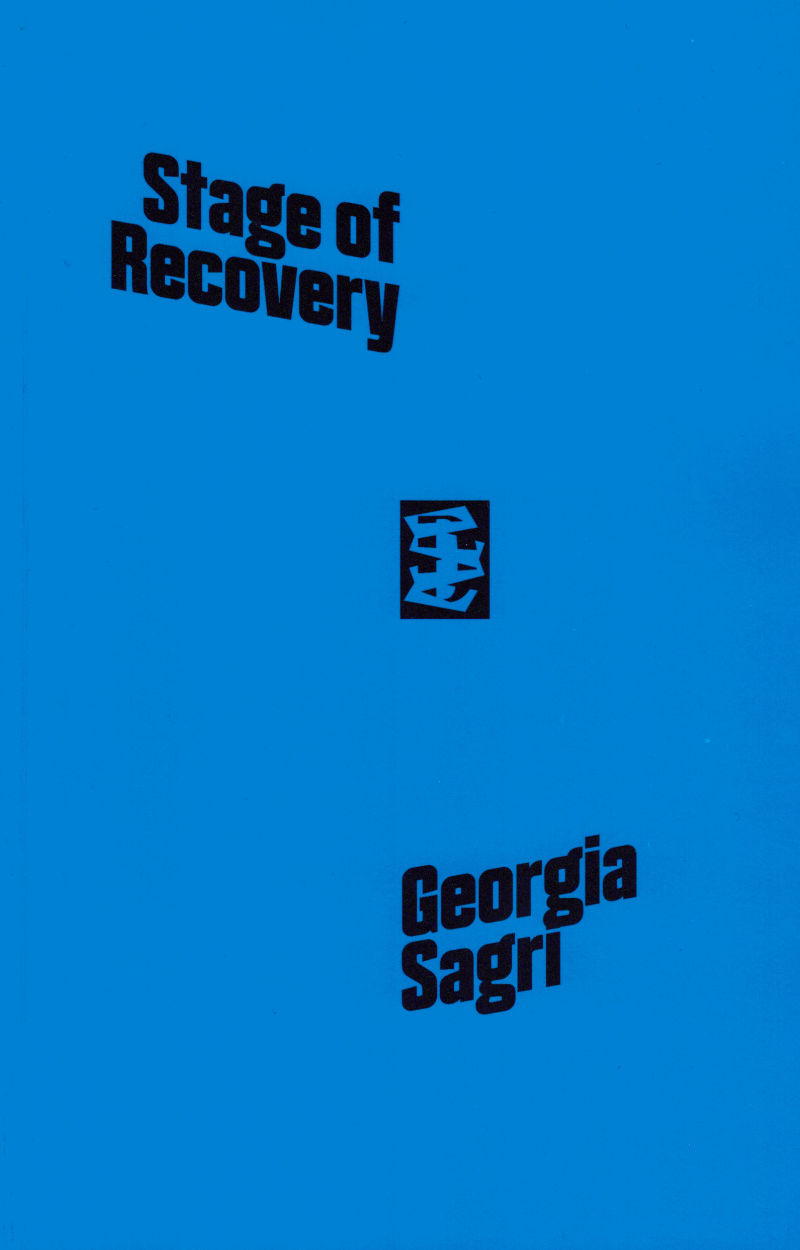
Stage of Recovery
Close to spiritual anarchism, Georgia Sagri’s writing happens in the heat of negotiation. Starting in the months leading up to the occupation of Zuccotti Park in 2011, which became the movement for people’s self-governance known as Occupy, this book carries the energy and commitment of open struggle, direct address, self-organisation and public assembly. It is a critique of representation and its implicit oblivion, told through a decade of artistic and activist practice. The writing is a mode of recovery, it is pre-content shared to encourage open processes in art, thinking and action.
Georgia Sagri (born Athens, 1979) lives and works in Athens and New York. Her practice is influenced by her ongoing engagement in political movements and struggles on issues of autonomy, empowerment and self-organisation. From 1997 to 2001 she was a member of Void Network, a cultural, political and philosophical collective operating in Athens. In 2011 she was one of the main organisers of the Occupy Wall Street movement in New York. Since 2013 she has been a member of the assembly of the Embros Theatre Occupation, and in 2014 she initiated Ύλη[matter]HYLE, a semi-public cultural space in the heart of Athens. She is professor of performance at the Athens School of Fine Arts.

Vostok
The theme was built around the idiom “VOSTOK”, the title given by Stéphanie Pécourt to her cycle dedicated to performative semantics, in which carte-blanches signed by guest curators at the Centre Wallonie-Bruxelles are deployed. Buried beneath several kilometers of ice, Lake Vostok acts as an invitation that both fascinates and refuses us. This sub-glacial lake on the edge of Antarctica, the largest identified, becomes the mirror-object of our desires and fears for the abyssal depths. The title of the program, Now I am a Lake, is taken from Sylvia Plath's poem Mirror (1961).
This booklet includes the scripts and texts of the performances, translated exclusively into French for the occasion, as well as images from the videos presented at the eponymous event. The compilation focuses on Sylvia Plath's poem Mirror, and includes an introductory text by curator Pauline Hatzigeorgiou.
edited by SB34
graphic design by Raphaëlle Serres / Solid Éditons
Contributions by Signe Frederiksen, Pauline Hatzigeorgiou, Margaux Schwarz, Hagar Tenenbaum, Sylvia Plath & Eleanor Ivory Weber

Dance First Think Later
An encounter between dance and visual arts.
Dance First Think Later - The Thinking Body between Dance and Visual Arts follows on from the exhibition-festival Dance First Think Later - An Encounter between Dance and Visual Arts, presented in Geneva in summer 2020, documenting it with a wealth of iconography and enriching it with a critical, theoretical and historical perspective on the works and the project. Commissioned texts are devoted to the 22 artists, written by authors active in museums, festivals, art schools, independent critics and artists.
The biennial event Dance First Think Later explores the converging fields between dance, performance, visual arts and moving images. Arta Sperto, which is organising and producing the exhibition-festival and publishing the book, is developing a cross-disciplinary approach that combines the operating mechanisms of the visual and performing arts, and the respective characteristics of museums/art centres and theatres/festivals. This approach is motivated by the need to support artists whose cross-disciplinary practices come up against the way in which culture is still largely organised by field, whether in terms of cultural policies, institutions, funding or the media. Starting with the works themselves, the book offers food for thought on cross-disciplinary approaches to the contemporary arts.
With / around Halil Altindere, Alexandra Bachzetsis & Julia Born, Pauline Boudry & Renate Lorenz, Alex Cecchetti, Clément Cogitore, Dara Friedman, Gerard & Kelly, Marie-Caroline Hominal, Lenio Kaklea, La Ribot, Pierre Leguillon, Xavier Le Roy, Klara Lidén, Melanie Manchot, Olivier Mosset & Jacob Kassay, Samuel Pajand, Christodoulos Panayiotou, Alexandra Pirici, Julien Prévieux, Marinella Senatore, Gregory Stauffer, Barbara Wagner & Benjamin de Burca.

Mystic Transport
Mystic Transport is an exhibition project initiated through a chance encounter between two artists, Koen Theys and Gülsün Karamustafa. Both are very much intertwined with the city they live in; Brussels and Istanbul and integrate visible and invisible materials and remnants from their immediate surroundings within their practice.
Intrigued by religious parades, the hamam, war propaganda, gender issues and the entertainment industry, Theys and Karamustafa use these phenomena as starting points for their video work, installations and performances. In doing so, both artists sketch a critical portrait of the society and culture in which we live and reside, reflecting on cultural canons and differing socio-economic realities. Mystic Transport thus results in unique crossovers.
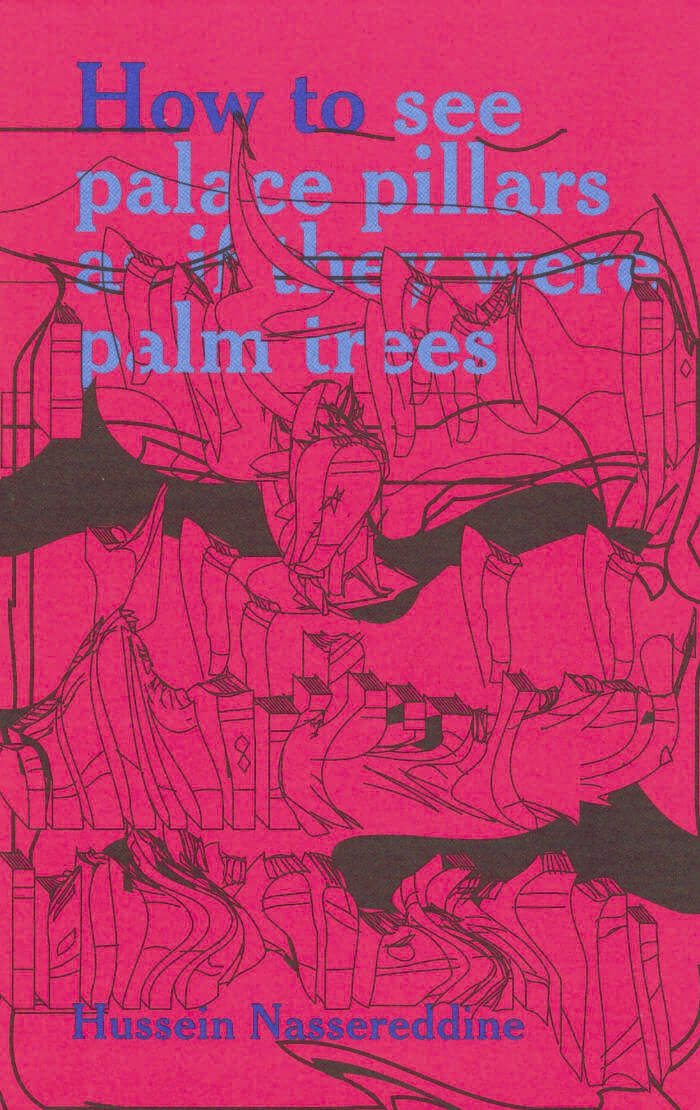
How to see palace pillars as if they were palm trees
For so it happens that when the poets speak, objects appear closer to their own shadows. The poet's mouth fills up with horses and marble, and his verses start to shine like rivers. These rivers then turn back to flow through the very palace he is depicting. The poet's own words begin to weigh down on him, as though he were holding up a palace with his palms. Then he travels, and the palace is obliterated. Countries and nations change, and naught remains but what the poets had seen. Of what the poets had seen, naught remains but its image in anthologies. And when the libraries have been flooded or burned to the ground, nothing but the commentaries on those anthologies are left, and all that one finds in these commentaries is that which was appropriated and wrought a thousand times over.
Hussein Nassereddine is a multidisciplinary artist. His work in installation, writing, video and performance originates from a practice around language that builds fragile monuments - some verbal, some sonic, some tactile - rooted in collective histories and resources of poetry, ruins, construction and image-making.
Translated from Arabic by Ben Koerber.

Belladonna Chaplets 2019
247. Sahar Muradi: A Garden Beyond My Hand
246. Diana Khoi Nguyen: Unless
245. Pamela Sneed: from Black Panther
244. Gail Scott: from Furniture Music
243. Ru (Nina) Puro: I Give You a Feeling, Sweet Jasmine, an Absence
242. Raquel Gutiérrez: There’s a Mother in my Lazy Pompadour

KAMERA CAHIER N° 10
A special edition issue curated, designed and published by AVARIE, Paris and Labor Neunzehn, Berlin. It accompanies KAMERA SERIES, while it is an independent and valuable object to collect. The central idea that informs and directs the booklets’ montage is the interplay between the concepts of addition and subtraction. This is achieved by unveiling a missing image in the screening or an unreleased second from an artist's film, expanded to 24 pages. Additionally, each booklet contains a piece directly removed from the show.
The editing establishes a dialogue between film frames and performed writings derived from texts, scripts, storyboards, and notes. The KAMERA exhibition is consequently extended into a physical space—the book—allowing for its widespread dissemination, complementing and contrasting with its potential online occurrence.
KAMERA SERIES is a screening program of experimental films, video art works and printed matter taking place in a former GDR building in Berlin. Each event showcases a retrospective of selected films by an artist and a small exhibition of his/her publications or works on paper over a span of 4 days.
KAMERA centers on fostering a critical dialogue between different film formats and artists’ books. Through its regular occurrence, it aspires to create a space for community exchanges about contemporary image-making. KAMERA is a series conceived and curated by Labor Neunzehn and AVARIE.
Fascinated by the intersection of visual art and cinema, Helga Fanderl’s short poetic films evoke intense and sensitive experiences of the real world. Using a small hand-held super 8 camera, she creates filmic responses to her perceptions, weaving together imagery and emotions in dense, rhythmic patterns solely through in-camera editing. She presents silent films in the form of ‘compositions’, crafting unique programs for site-specific personal projections and transforming spaces into temporary cinemas.

Estonian Academy of Arts / EKA GD MA
fshshshshshsh
Written by students of the Master of Contemporary Art program at the Estonian Academy of Arts during the Writing Practice course with Lieven Lahaye, February 2025.
Contributions by Bob Bicknell-Knight, Giulio Cusinato, Anastasiia Krapivina, Tonya Kroplya, Fausta Noreikaite, Rosa-Maria Nuutinen, Nora Schmelter
Designed by Alina Scharnhorst and Sunny Lei (EKA GD MA)

nnn2. - no no no celestial journal
published commonly, no no no expounds an experimental poetic offering, both text & art.
each issue features a limited edition artwork. which can be tacked or framed or stored in a drawer.
celestial in nature, no no no takes the form required, and necessary.

Hechtmappen bieden geen soelaas
Hechtmappen bieden geen soelaas is wat overbleef na een vakantiejob waarbij de taakinhoud vooral bestond uit het verwijderen van nietjes uit verouderde documenten. Deze weken waren de bron voor fascinaties voor ongemakkelijke stiltes, gesprekken in liften, de diefstal van fluorescerende pennen en een ontplofte ventilator.
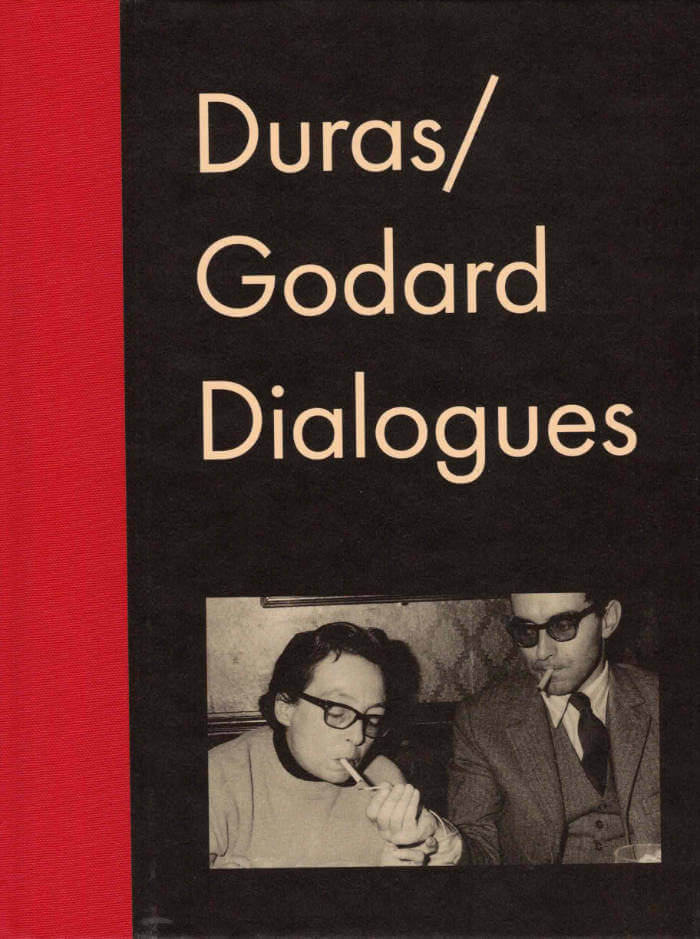
Duras/Godard Dialogues
Three dialogues between Marguerite Duras and Jean-Luc Godard from 1979, 1980 and 1987.
“The two demonstrate a profound shared passion, a way of literally being one with a medium and speaking about it with a dazzling lyricism interspersed with dryly ironic remarks, fueled by a conviction that inspires them to traverse history. Their point of intersection is obvious. Duras, a writer, is also a filmmaker, and Godard, a filmmaker, has maintained a distinctive relationship with literature, writing and speech.”—Cyril Béghin
Introduction, afterword and footnotes by Cyril Béghin.
Translation by Nicholas Elliott.

Glossolalia
Translated by Kristine Ong Muslim with an introduction by Amado Anthony G. Mendoza III.
Feverish from the engrossing revelatory arcs of the uncanny, Glossolalia is a mind-bending foray into the twisted underlying logic of material reality and a rip-roaring romp through Philippine urban legends, psychogeography, and the uncomfortable, often seedy aspects of music, cinema, and art. Marlon Hacla—who is a computer programmer as well as a poet and created the first robot poet in Filipino, Estela Vadal—is a significant innovator in the Philippine poetic tradition. As Amado Anthony G. Mendoza III notes in his introduction, Hacla “eschews the spare language, subtle imagery, and quietism featured in most contemporary Philippine poetry. Hacla’s poems, especially here in Glossolalia (and in its informal sequel Melismas), read like an unapologetic statement against the New Critical tradition that has been pushing its weight in the Philippine literary scene for more than half a century.” This collection of relentless, densely layered prose poems is the third of Hacla’s books to be translated into English by Kristine Ong Muslim.
Marlon Hacla is a poet and artist living in Quezon City, Philippines. His first poetry collection, May Mga Dumadaang Anghel sa Parang (Manila: National Commission for Culture and the Arts, 2010), was published as part of UBOD New Authors Series II. His second book, Glossolalia, was published by High Chair in 2013. Kristine Ong Muslim’s English translations of his books are Melismas (Oomph Press, 2020), There Are Angels Walking the Fields (Broken Sleep Books, 2021), and Glossolalia (Ugly Duckling Presse, 2023).

Time is an Arrow, Error
Two clock-faces are staring at each other.
They are two sides of one thing, as different as they are the same.
They move as two bodies revolving around each other, into a tender embrace.
A kiss, made of time, in time.
Mirrored shape shifters, their hour-numbers climbing on each other's shoulders.
Running up against the limits of their own usefulness, clocklikeness.
A book by Katja Mater, with a text by Amelia Groom designed by Elisabeth Klement
79 clocks, 192 pages, open spine, 17 × 21 cm
Printed by Wilco Art Books on Arena White Rough by Fedrigoni